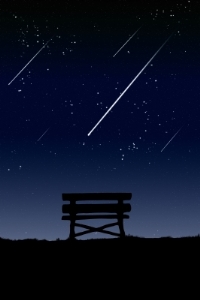
If you like watching the skies, then you need to mark the calendar for the Perseid meteor shower, which will peak on Aug. 12 and 13.
According to Bill Cooke, head of NASA’s Meteoroid Environment Office, the Perseids are considered the fireball winner of yearly meteor showers. Fireballs can glow as brightly as Venus and Jupiter in the night-time sky. Cooke said of all meteor showers, the Perseids make more fireballs than any of the others.
Since 2008, Cooke, along with his team, have been watching the activities of fireballs with a network of meteor cameras scattered throughout the southern half of the United States. While the Perseids lead the way in shining the brightest of all yearly showers, the Gemind meteor showers are not that far behind.
The Perseid shower takes place every August when the planet goes through the Comet Swift-Tuttle’s dust and debris stream. The comet’s stray bits come into the atmosphere at a whopping 132,000 mph that produce light streaks in the sky.
Cooke said the Swift-Tuttle comet has a 16-mile across nucleus (the majority of comets have just two-mile across nuclei. It’s speculated that the large nucleus is the reason for the extremely large debris stream and the cause for the meteor shower every year.
If you want to see the Perseid meteor shower, the best showing will be between 10:30 p.m. and 4:30 a.m. on Aug. 12 and 13 and away from city lights… if possible. The show will start slow at first but will pick up around midnight.
Online News Heard Now
Love this! I also found some great info on http://spacedex.com/perseids if anyone is interested!